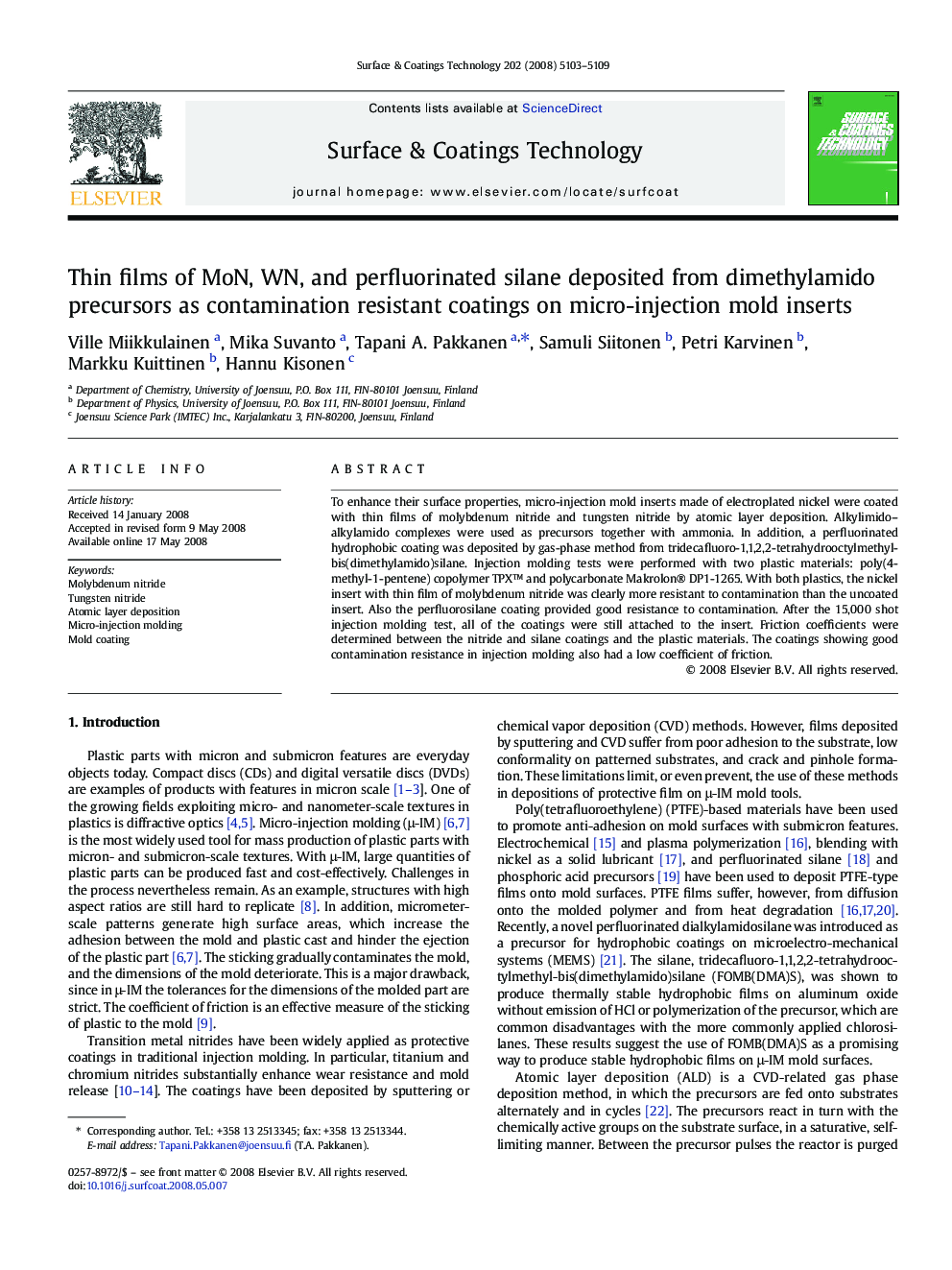| Article ID | Journal | Published Year | Pages | File Type |
|---|---|---|---|---|
| 1661503 | Surface and Coatings Technology | 2008 | 7 Pages |
To enhance their surface properties, micro-injection mold inserts made of electroplated nickel were coated with thin films of molybdenum nitride and tungsten nitride by atomic layer deposition. Alkylimido–alkylamido complexes were used as precursors together with ammonia. In addition, a perfluorinated hydrophobic coating was deposited by gas-phase method from tridecafluoro-1,1,2,2-tetrahydrooctylmethyl-bis(dimethylamido)silane. Injection molding tests were performed with two plastic materials: poly(4-methyl-1-pentene) copolymer TPX™ and polycarbonate Makrolon® DP1-1265. With both plastics, the nickel insert with thin film of molybdenum nitride was clearly more resistant to contamination than the uncoated insert. Also the perfluorosilane coating provided good resistance to contamination. After the 15,000 shot injection molding test, all of the coatings were still attached to the insert. Friction coefficients were determined between the nitride and silane coatings and the plastic materials. The coatings showing good contamination resistance in injection molding also had a low coefficient of friction.
